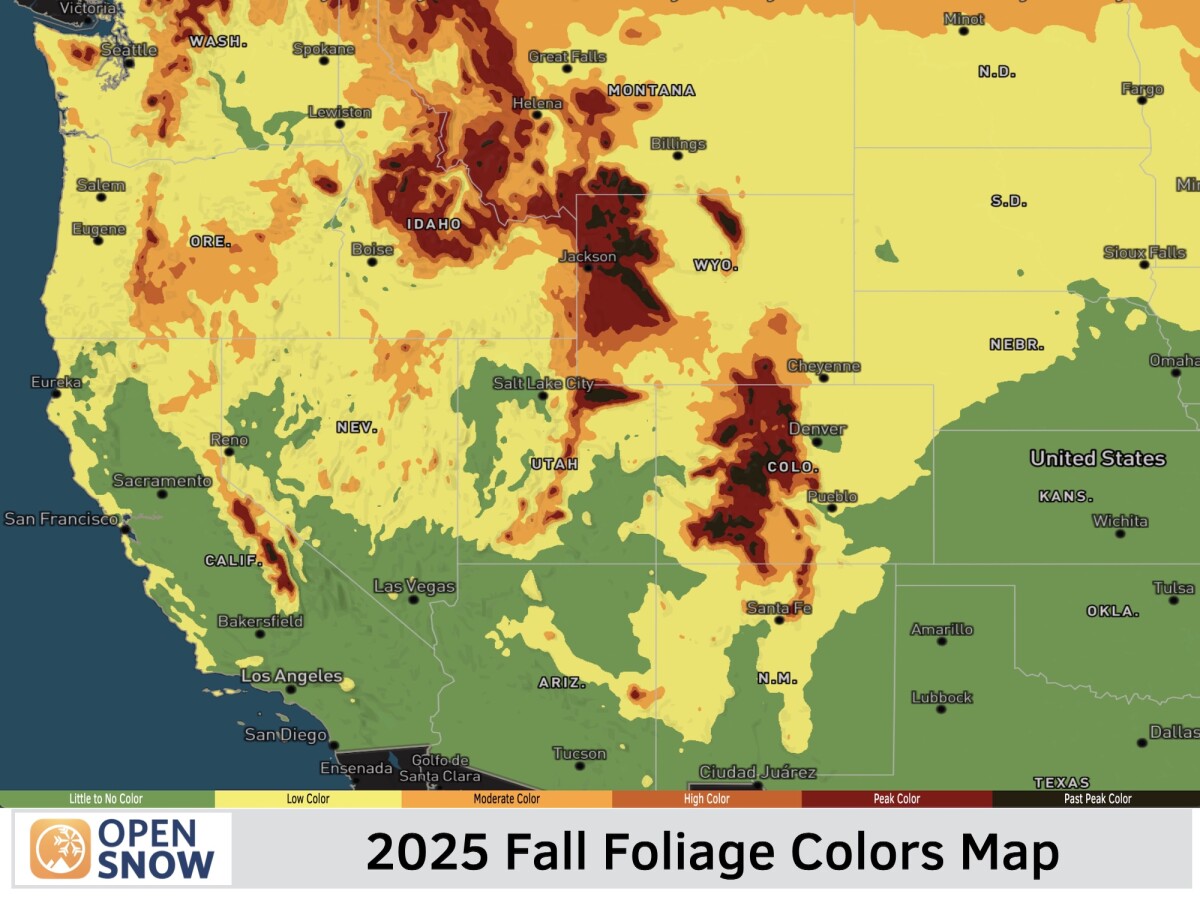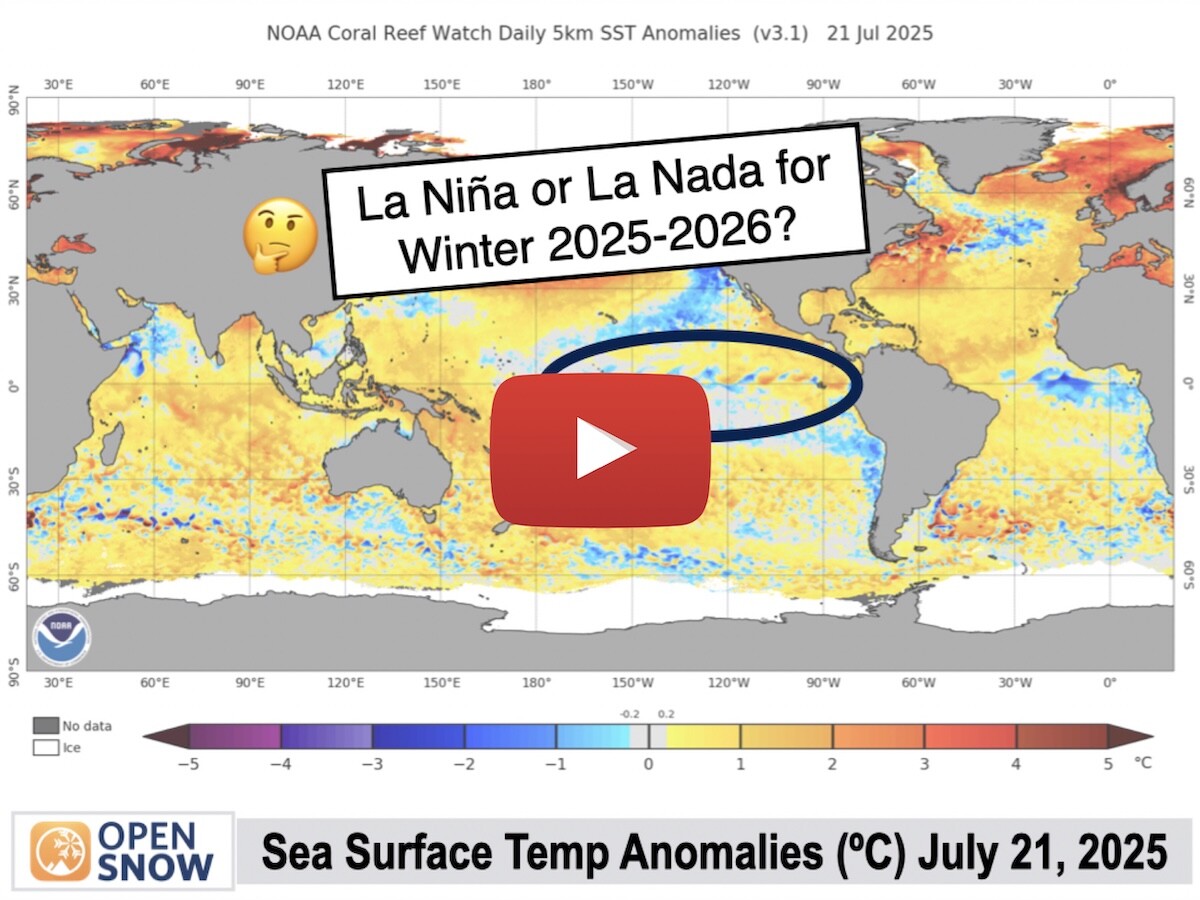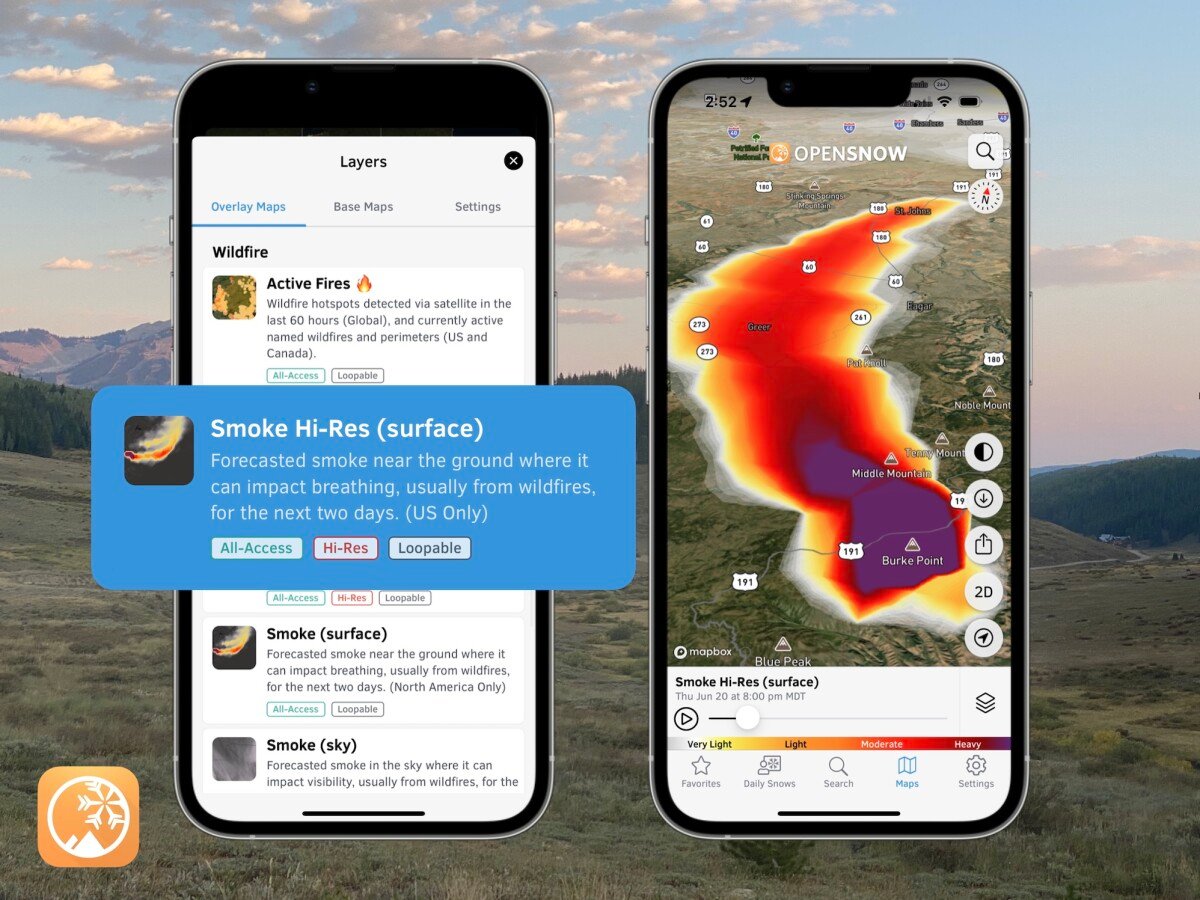Western US Daily Snow

By Alan Smith, Meteorologist Posted 22 days ago July 7, 2025
Monsoon Lull Southwest, Midweek Rain Chances Northwest & Northern Rockies
Summary
The monsoon has weakened after last week's surge, and the Southwest and Four Corners region will see only isolated thunderstorms with light rainfall this week. However, a cold front and Pacific moisture will move across the northern tier mid to late week with rain developing over the PNW on Wed, while the Northern Rockies will see showers & t-storms Wed-Fri.
Short Term Forecast
Helpful Links:
5-Day Temperature Outlook:
Overall, the West will be warmer than normal this week but these warm anomalies will primarily be a result of the early week pattern, as a cold front will move through later this week to bring some temporary heat relief.

Tuesday (July 8):
Hot and dry conditions will prevail across much of the West, but lingering moisture from the Gulf of Mexico will remain over portions of Southern and Eastern New Mexico, including the Sacramento Mountains, where more productive scattered thunderstorms will produce locally heavy downpours.

Elsewhere, low-grade monsoonal moisture will lead to isolated thunderstorms across Western New Mexico, Arizona, Colorado, and Southern Utah, with most storms producing brief, light rain and gusty winds.
A weak trough will also move into the Pacific Northwest with moisture and instability increasing downstream to result in isolated thunderstorms from Oregon to Idaho to Montana. Low-level moisture will be lacking in this pattern, so this will be a dry thunderstorm setup with storms producing light rain and gusty winds.

Wednesday (July 9):
A stronger trough with Pacific moisture will track across the Pacific Northwest, and a cold front will also move through with rain showers developing over the Olympics and Cascades.
The Olympic Peninsula (excluding the rain shadow) will generally pick up 0.05 to 0.3 inches of rain with similar totals over the Northern Oregon Cascades around Mt. Hood. Over the Cascades, rainfall amounts will be higher along the western slopes and along the crest, ranging from 0.1 to 0.6 inches, with isolated higher amounts possible.

Further inland, a shortwave trough will move into the Northern Rockies ahead of the cold front, which will trigger isolated "dry" thunderstorms that will produce light rain and gusty winds.
A similar dry thunderstorm setup is expected over the Southwest, with any storms producing light rain and gusty winds. Colorado looks to see a rare thunderstorm-free day.

Wednesday Night to Thursday Morning (July 10):
While the daytime period looks dry in Colorado, an overnight threat of showers and thunderstorms will exist across Northwest Colorado, Western Wyoming, and Northeast Utah as the shortwave moves through the Central Rockies.
There is a chance of lightning during the early morning hours across this region, extending as far south as the Elk and Sawatch Ranges in Colorado, so heads up if you have Thursday morning peak bagging plans.

Thursday (July 11):
The larger trough over the Northwest will track eastward across the Northern Rockies, and a cold front will also move through this region with widespread showers developing. Thunderstorms are also possible, though activity will be more isolated given the cooler and more stable airmass.
Rainfall amounts will be significant in some areas, especially around the Glacier National Park region and further south near the Beartooth Range where localized amounts of a half-inch to an inch are possible.

To the south, the shortwave tracking across the Central Rockies will result in isolated thunderstorms across Wyoming, Colorado, New Mexico, and Eastern Arizona with storm development possible before noon (especially in Colorado and Wyoming). Storms will generally produce light rainfall.

Friday (July 11):
The trough will work its way eastward across the Northern Rockies on Friday with showers favoring the eastern ranges such as the Beartooths and Bighorns.
Some models are projecting snow levels to dip as low as 10,000 to 11,000 feet on Friday morning, meaning that the higher terrain in the Beartooths and Bighorns (and maybe even the Winds) could get dusted with wet snow.
Further south, the cold front will slide into Utah and Colorado with mainly an isolated thunderstorm threat across Colorado, New Mexico, Eastern Arizona, Southern Wyoming, and the Uinta Range in Utah. Coverage may be a bit higher over the Front Range and Sangre de Cristo Range, with brief downpours possible.

Saturday (July 12):
The cold front will slowly work its way southward through the Southern Rockies, but limited moisture will result in primarily isolated thunderstorms and light/spotty rainfall across the Four Corners states.

Extended Forecast
Outlook for July 13-21:
Next week, above-normal temperatures will return to the West as a ridge of high pressure rebuilds. That means hot temperatures for lower elevations as we are approaching the climatological peak in terms of average temperatures (late July is the peak in most areas).

The monsoon will gradually pick back up over the Southwest next week with above-normal precipitation expected over New Mexico and Southern Arizona in NOAA's 6-10 Day Outlook from July 13-17, while much of the Interior West, including Utah and Northern Arizona, is expected to be drier than normal.

However, NOAA's 8-14 Day outlook from July 15-21 has a wetter signal as the monsoon is projected to strengthen and push northward a bit around mid-month.
Above-normal rainfall probabilities expand into Southern Utah and Colorado around this time, with an uptick in thunderstorm activity possible.
There are also some wet anomalies over the far Northern and Eastern Rockies as longer-range models are hinting at some weak "troughing" over this region, which could lead to increased thunderstorm potential.

Thanks so much for reading! Next update on Wednesday (July 9).
Alan Smith
Announcements
OpenSnow is on YouTube!
We are posting 4-7 minute videos on mountain weather, powder forecasts, severe weather, app features, and interesting weather news.
About Our Forecaster




